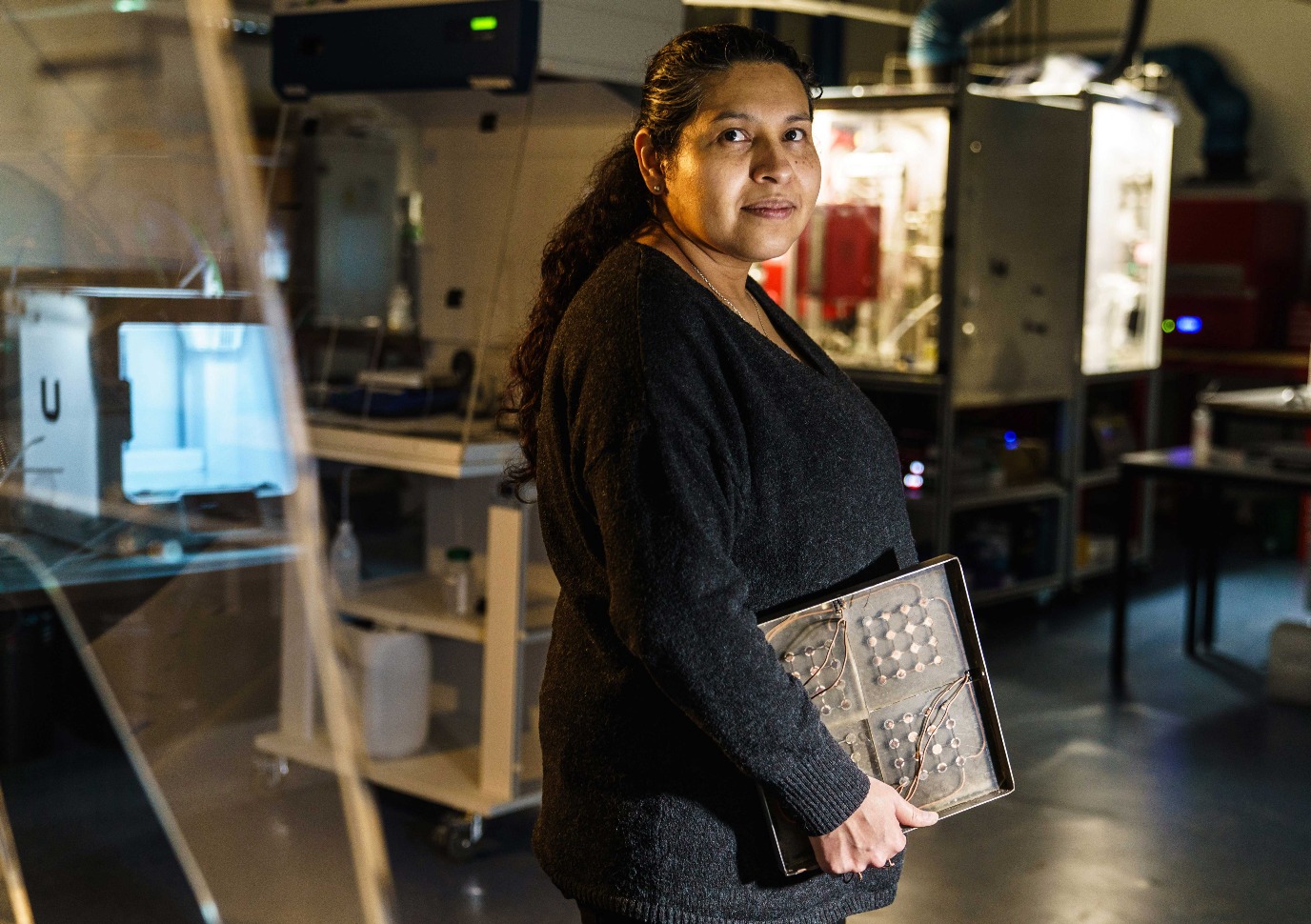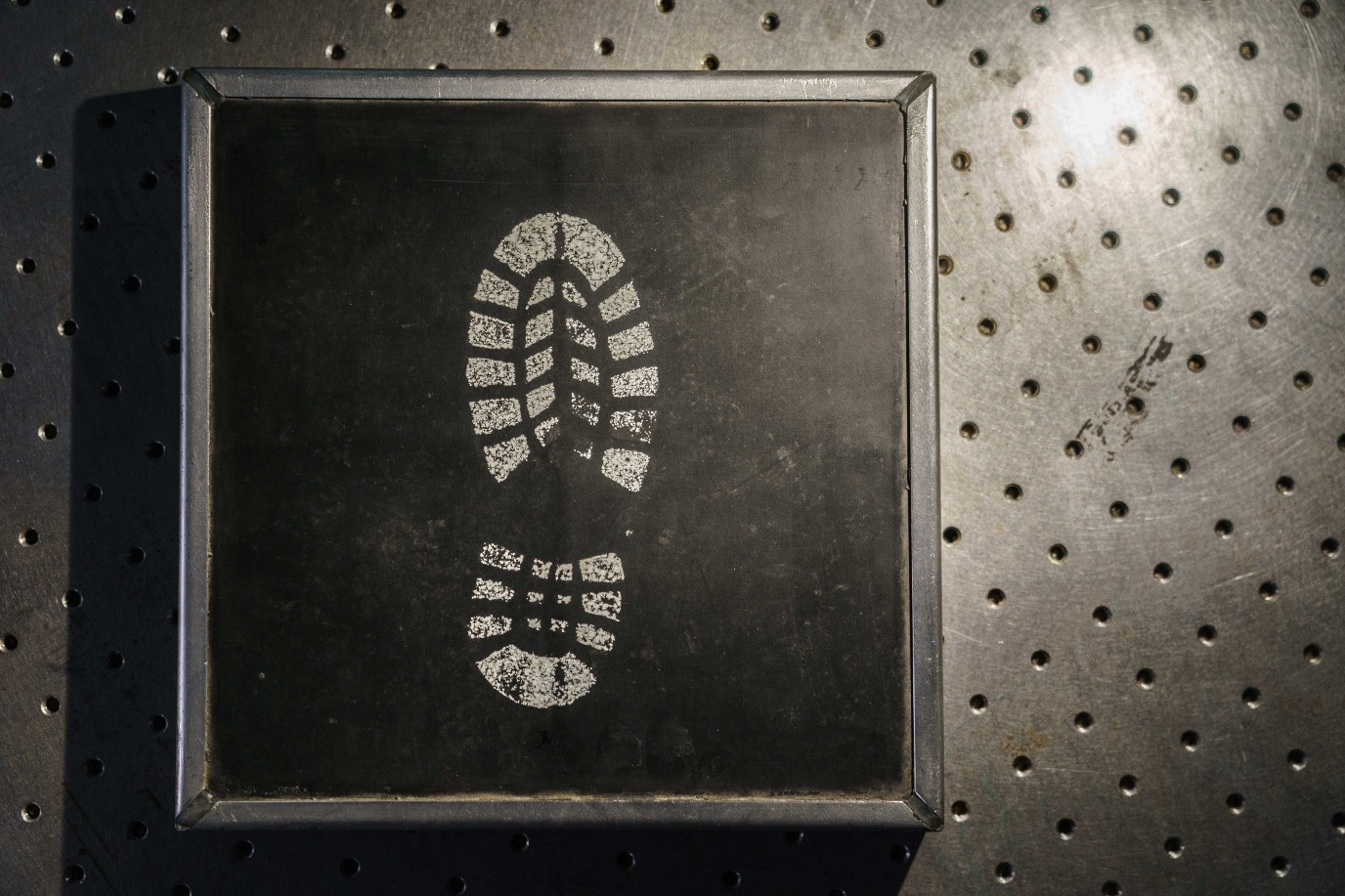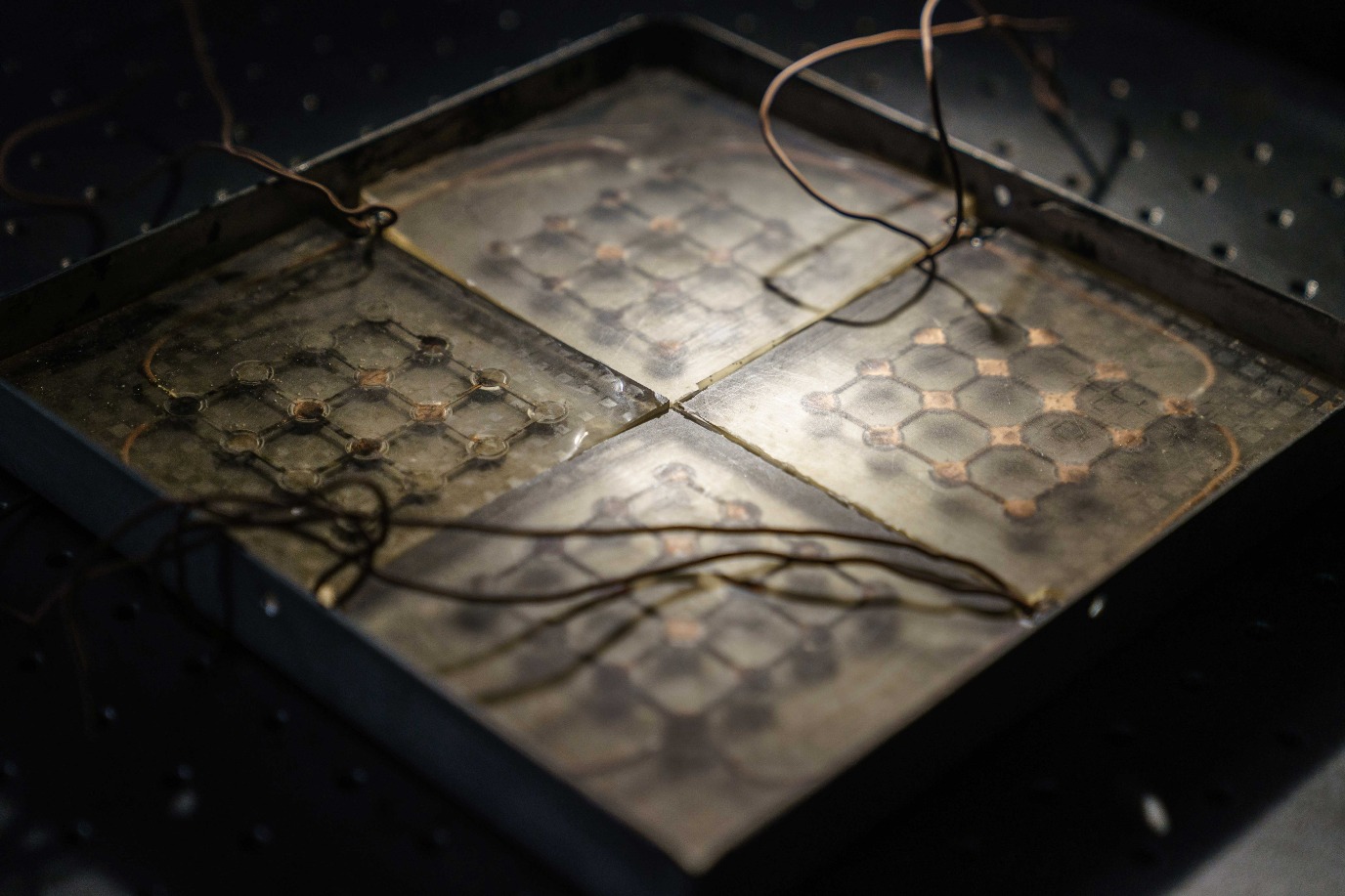Harvesting energy from walking
A tile on the sidewalk of Zuidhorn station, in a busy spot between the train and bus station, counts the steps of people walking on the tile, and harvests energy from their movements. At the moment, however, the tile is back in the lab of developer Professor Mónica Acuautla Meneses for an upgrade.



As shown in the photo, the tile is equipped with a large number of piezoelectric pellets: a material that generates an electric charge as a result of the applied pressure – for instance, when someone steps on it. ‘The amount of electricity produced by a traveller at Zuidhorn station is small, not comparable to what a solar panel can deliver,’ Acuautla explains. But it is enough to locally power small electronics, such as a sensor.
An upgrade of the tile was needed because there was some leakage around the cables. Acuautla: ‘Of course, everything worked very well in the lab. We had even submerged the tile under water. But when people were walking on it while wet, a sort of a pumping effect occurred that allowed water to reach the electronics inside.’ For Acuautla, these kinds of real-world tests are very valuable. ‘Otherwise, we would only be able to carry out tests in a controlled environment in the lab. By running real-world tests, you learn much more.’
Acuautla would like to develop similar tiles for traffic lights, where the movement of the traffic supplies power for the lights, or for a kindergarten, where kids can operate coloured lights by jumping. In her research, she is working on making and tailoring the piezoelectric materials that are needed for various applications. She explains: ‘For example, piezo materials that are currently commercially available typically have specific requirements, such as movements at a higher frequency. We’re looking for materials that can work with slower movements, in other words at a lower frequency. Of course, you can’t just ask people to walk quicker!’
Text: FSE Science Newsroom | Charlotte Vlek
Photos: Reyer Boxem
Every two weeks, UG Makers puts the spotlight on a researcher who has created something tangible, ranging from homemade measuring equipment for academic research to small or larger products that can change our daily lives. That is how UG researchers contribute to the solutions for big scientific and societal challenges.
For decades, engineering teaching and research at the UG has been part of a wide array of strong disciplines, and from a national point of view, our collaboration with the four technical universities is becoming more and more intensive.
Previous portraits of Makers can be found on the overview page
More information
Mónica Acuautla Meneses
More news
-
27 November 2025
Aeroplane spotting using a radio telescope
-
26 November 2025
Why are shiny colours rare yet widespread in nature?
